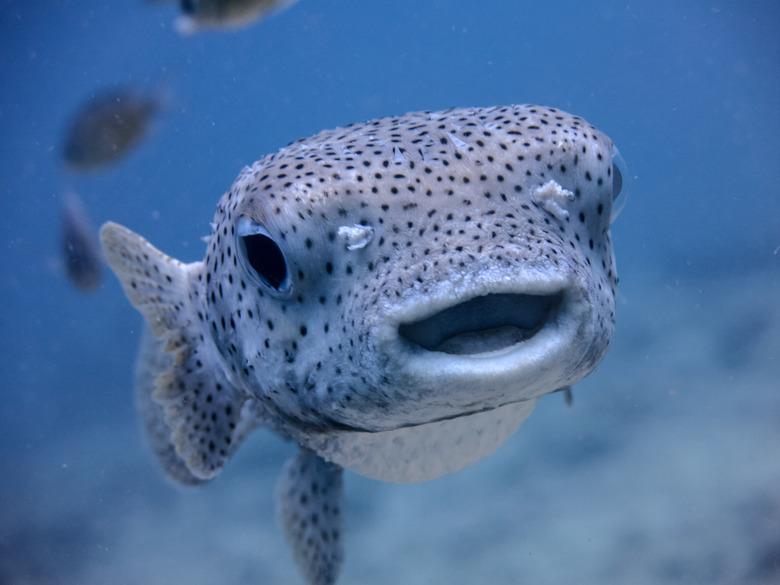How Do Fish Obtain Food?
Fish obtain food in a wide variety of ways. The numerous species of fish have evolved many unique ways of feeding. Their diets range from microscopic plants to other large fish and aquatic mammals and birds. To obtain these various foods, they have developed foraging and hunting techniques suitable to their environment and body types. Many fish possess streamlined bodies necessary either to capture their prey or elude predators.
Filter Feeders
Filter Feeders
Filter feeders obtain food from suspended plant or animal matter. This is usually accomplished by passing water through some type of a specialized filtering structure in their mouths. The largest of all fish, the whale shark, is a filter feeder and it feeds on phytoplankton, one of the smallest organisms in the ocean. Sardines also feed on phytoplankton and small zooplankton. Herring are another filter feeder that feed by night on large groups of zooplankton that live in deep water by day and migrate toward the surface at night.
Herbivores
Herbivores
Fish that survive on plant matter are known as herbivores. This type of fish is important to the health of coral reefs by limiting the amount of algae growing on the coral. Strategies employed to feed include grazing on plants and scraping plant growth from rocks and coral. Parrotfish are reef herbivores. Among freshwater fish, the Pacu is an herbivore and in captivity enjoys vegetables and fruits.
Carnivores
Carnivores
Carnivores are meat-eating fish. As such they must either capture or scavenge their prey in order to survive. These are mostly streamlined fish, using their body shape to generate speed to surprise and catch their prey. They detect their target primarily by sight and by detecting water vibrations through special cells called their lateral line. The great white shark is a prime example of a carnivore, and it has a number of evolutionary enhancements that allow it to be a top predator. It can detect electrical impulses generated by all creatures and has a tremendous sense of smell. This enables it to detect the blood of injured prey which can be attacked with minimal effort.
Omnivores
Omnivores
Fish that eat either plants or animals are omnivores. They are nonselective, opportunistic feeders obtaining their food based on availability rather than preference. Many catfish fall into this category and spend time scavenging the bottom of their habitat for anything edible. Other omnivores such as the tilapia are popular for fish farming and aquaculture due to the ability to create fish feed for them from diverse sources.
Extraordinary Techniques
Extraordinary Techniques
Some fish have developed extraordinary techniques to survive. The archer fish fires a jet of water from its mouth to capture insects above water. It even compensates for the refraction of light as it passes through the water's surface. Fish in the deep ocean darkness, such as the viper fish, have developed special light organs to lure their prey and very large eyes to see them. Snakeheads can move over land in rainy seasons in search of food and habitat. Fish exhibit a tremendous range of strategies to thrive and obtain sustenance.
References
Cite This Article
MLA
Agar, Robert. "How Do Fish Obtain Food?" sciencing.com, https://www.sciencing.com/do-fish-obtain-food-5382470/. 13 March 2018.
APA
Agar, Robert. (2018, March 13). How Do Fish Obtain Food?. sciencing.com. Retrieved from https://www.sciencing.com/do-fish-obtain-food-5382470/
Chicago
Agar, Robert. How Do Fish Obtain Food? last modified March 24, 2022. https://www.sciencing.com/do-fish-obtain-food-5382470/
